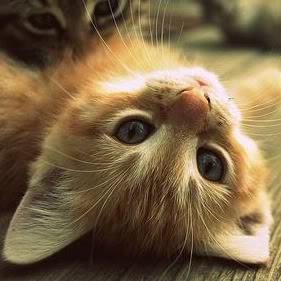Want to make those adorable cat images on your webpage interactive? You’ve got a fantastic picture of a cute cat, but right now, it’s just sitting there, static. Let’s change that! In this guide, we’ll show you how to transform any image, especially those delightful Cat Images Cute we all love, into a clickable link using simple HTML.
Currently, you might have code that looks something like this, displaying a lovely feline:
<img alt="A cute orange cat lying on its back." src="https://cdn.freecodecamp.org/curriculum/cat-photo-app/relaxing-cat.jpg">This line of code, known as an img element, is responsible for showing the cat image you see below.
 A cute orange cat lying on its back.
A cute orange cat lying on its back.
Go ahead and try clicking on the cat image above. You’ll notice… nothing happens. That’s because, as it stands, this image is not a link. But what if you wanted visitors to click on this cute cat picture and be taken to another webpage, perhaps one with even more cat images cute or information about cat breeds? That’s where anchor tags come in!
To make our cat image clickable, we need to wrap it within an anchor tag, represented by <a>. Anchor tags are the foundation of links on the web. They tell the browser, “Hey, this element should be a hyperlink!”
Anchor tags come in pairs: an opening tag <a> and a closing tag </a>. Everything placed between these tags becomes clickable. To tell the link where to go, we use the href attribute within the opening <a> tag. Think of href as the destination address for your link.
For example, if you wanted to link to https://www.example.com, your opening anchor tag would look like this: <a href="https://www.example.com">.
Now, to make our cute cat image clickable, we simply need to place the entire img element code inside these anchor tags. Like a cozy blanket, the anchor tags will envelop our image, making it interactive.
Here’s how you would structure the code to make your cat image cute and clickable:
<a href="https://www.example.com">
<img alt="A cute orange cat lying on its back, now a clickable image link." src="https://cdn.freecodecamp.org/curriculum/cat-photo-app/relaxing-cat.jpg">
</a>In this updated code, we’ve wrapped the img tag within the <a> tags. The href attribute in the <a> tag is set to https://www.example.com (you can replace this with any website you want to link to). Now, when someone clicks on the cute cat image, they will be taken to https://www.example.com.
By using anchor tags, you can easily transform static images into interactive elements, enhancing user engagement on your website, especially when showcasing captivating content like cat images cute! Experiment with different links and images to create a more dynamic and engaging web experience.

